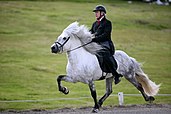User:Allard
Hello and a warm welcome to all my fellow Wikipedians. How nice of you to drop in to see who I am!
Morning>
Wikipedia & me:[edit]
How I discovered Wikipedia, I do not remember. But from being a reader I slowly became a contributor. Although I don't work that much on Wikipedia I do see myself as a Wikipedian. I don't go searching on Wikipedia what I can edit next, I edit what I find and want to do. This means I add and mainly improve a lot of small things and only rarely I make large edits.
My work:[edit]
Articles I've started on Wikipedia:
- Fort Knox Bullion Depository
- Animals are Beautiful People
- Template:David Attenborough Television Series
- Template:Malta Islands
Images I made for Wikipedia:
 Dutch lower house as from 2006
Dutch lower house as from 2006 New image of the Netherlands Air Force Roundel
New image of the Netherlands Air Force RoundelMap on membership of the League of Nations
United Nations membership map
 Improved image of the British Helgoland flag
Improved image of the British Helgoland flag New image showing the current flag of Hel(i)goland
New image showing the current flag of Hel(i)goland
Article guide:[edit]
A list of articles worth looking at, if one can find them:
- Antidisestablishmentarianism
- Ball's Pyramid
- British Isles (terminology)
- Eadweard Muybridge
- Gunpowder Plot
- Horace de Vere Cole
- Humphrey (cat)
- Islomania
- List of countries by date of nationhood
- List of flags
- List of people who died on their birthdays
- List of regnal numerals of future British monarchs
- List of unusual deaths
- Northwest Angle
- Quadripoint
- Racetrack Playa
- Rule of tincture
- San Gimignano
- Transcontinental country
- Undivided India & Partition of India
- Voyager Golden Record
- Web colors
- Winchester Mystery House
And there's always the Random article
And to all citizens of the European Union, please read this: Oneseat.eu
News[edit]
- A fire in a residential building in Kuwait City's suburb of Mangaf kills fifty people.
- A plane crash near Chikangawa, Malawi, kills nine people, including Vice President Saulos Chilima (pictured).
- In tennis, Iga Świątek wins the women's singles and Carlos Alcaraz wins the men's singles titles at the French Open.
- In the Indian general election, the National Democratic Alliance, led by Prime Minister Narendra Modi, is re-elected with a reduced majority.
Selected anniversaries[edit]
- 1579 – Explorer Francis Drake landed in a region of present-day California, naming it New Albion and claiming it for England.
- 1631 – Mumtaz Mahal (pictured), wife of the Mughal emperor Shah Jahan, died in childbirth; Jahan spent the next seventeen years constructing her mausoleum, the Taj Mahal.
- 1919 – Hundreds of Canadian soldiers rioted in Epsom, England, leading to the death of a British police officer.
- 1952 – Guatemalan Revolution: The Guatemalan Congress passed Decree 900, redistributing unused land greater than 224 acres (0.91 km2) in area to local peasants.
- M. C. Escher (b. 1898)
- Richard Gagnon (b. 1948)
- Amari Cooper (b. 1994)
- Mohamed Morsi (d. 2019)
Did you know...[edit]
- ... how salamanders cross the road (pictured)?
- ... that Joe Shield was the first person from Vermont to be drafted into the NFL and then make a team's roster?
- ... that codebreaker Emily Anderson was trained to become a Hush WAAC before she joined the British GCHQ?
- ... that actress Mia Goth was cast as both Pearl and Maxine in X to emphasize the similarities between the two characters?
- ... that making the manganese nitride Mn2N requires a sponge?
- ... that AI researcher Jan Leike believes "safety culture and processes have taken a backseat to shiny products" at OpenAI?
- ... that Zombie Plane cannot take flight from Chuck Norris?
- ... that Two Roosters Ice Cream became locally popular after offering odd flavors such as "grilled cheese" and "pizza"?
- ... that Drake discovered an ancient Chinese city?
Today's featured article[edit]
The Icelandic horse is a breed of horse developed in Iceland. Developed from ponies brought to Iceland by Norse settlers in the 9th and 10th centuries, the breed is mentioned in Icelandic literature and historical records. They are long-lived, hardy, and have few diseases in their country. In addition to the gaits typical of other horse breeds, many Icelandic horses can also do the tölt (pictured) and the flying pace. The only breed of horse in Iceland, sizable populations exist in Europe and North America. They are used for sheepherding work in Iceland, leisure, showing, and racing. Selective breeding and natural selection with the Icelandic climate developed them into their current form. In the 1780s, much of the breed was killed after a volcanic eruption at Laki. The first breed society for the Icelandic horse was created in Iceland in 1904; the breed is now represented by organizations in 19 nations, under the auspices of the International Federation of Icelandic Horse Associations. (Full article...)











